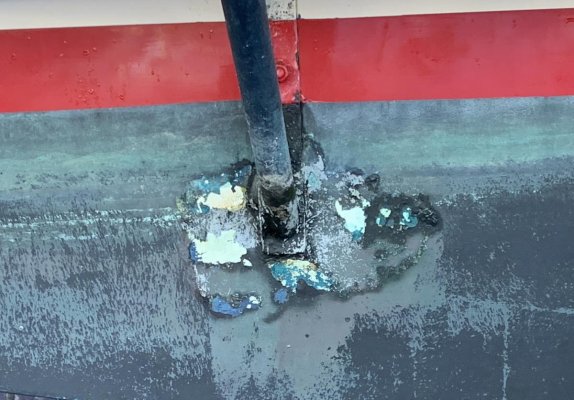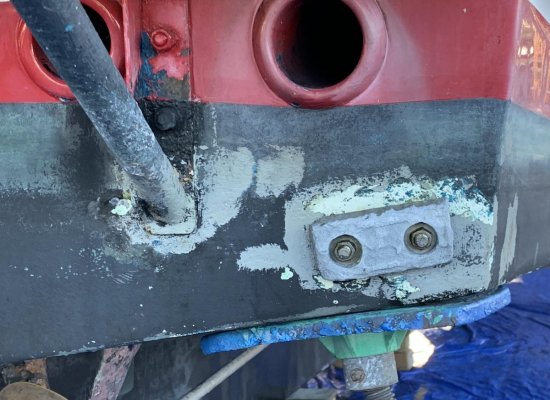jwag956
Veteran Member
We just got hauled (South Puget Sound) and the yard noticed that our swim platform supports had corrosion around where they attach to the transom - EXACTLY the same as another GB in the yard (both GB 42CL late ‘80s’). According to the yard - the large zincs mounted on the transom are precisely to help with this - inside the rear lazerette the zincs and platform mounts are all bonded (independent of any other system). But they have no explanation for the corrosion - both boats are same harbor, different marinas.
Anyone solved this? Thoughts?
Pictures attached.
Anyone solved this? Thoughts?
Pictures attached.


